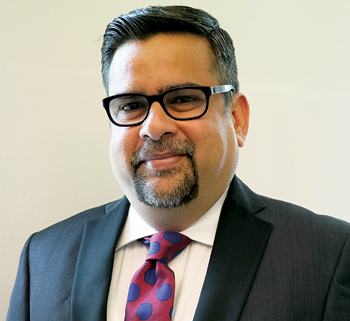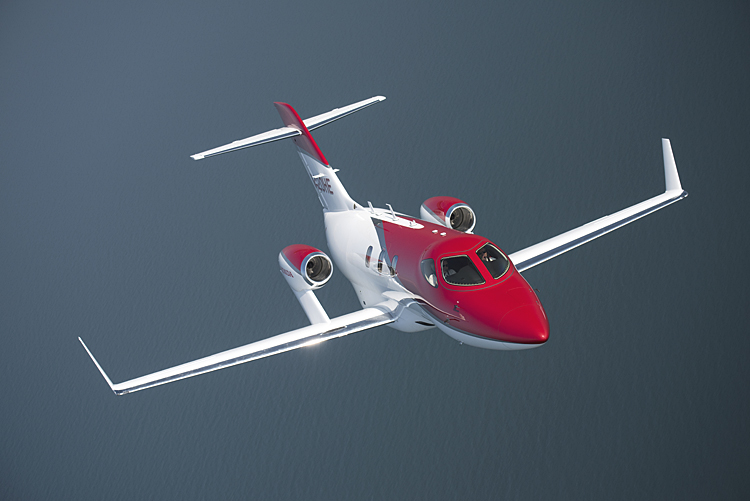EXCLUSIVE
‘We need to focus on providing better customer experience to our passengers’
Shailendra P. Singh, Director & CEO, Arrow Aircraft Sales and Charters Pvt Ltd in conversation exclusively with BizAvIndia.

BizAvIndia (BAI): How has the charter business in India evolved in the past decade?
Shailendra P. Singh (Singh): The charter market in India has remained stagnant since past few years and has not evolved much in the past decade as compared to the business model innovations that we have seen in US and Europe. The industry in India is still very fragmented. If you exclude State-owned Pawan Hans, then around 110 NSOPs (Non Scheduled Operator Permits) operate 300 aircraft i.e., we have an average of three aircraft per NSOP, which is very less for any company to make a major business impact.
A few mobile app based charter aircraft aggregators tried to use technology to streamline supply and have succeeded to a limited degree. However, the continued success depends on having own fleet of aircraft or at least having aircraft under your management control.
Further, few new customers are being developed. To truly evolve, business aviation in India needs to have the following drivers:
- Fewer NSOPs: If DGCA allows companies to purchase aircraft and put them under professional aircraft management companies, then not only they will have fewer companies to monitor, but the customers will also have a fewer companies to interact with. This will lead to consolidation which will drive industry efficiency.
- Better aviation infrastructure: Most of the charter passengers come from Tier-I cities and there are huge constraints in parking of private aircraft. This is a huge deterrent for any company or individual to purchase an aircraft. Further, many aircraft charterers from tier 2 and 3 cities like to fly in large cabin aircraft and such aircraft are available in limited supply only.
- Better customer experience: We need to focus on providing better customer experience to our passengers. It is often seen that some international charter aviation companies are able to charter Indian passengers at above market rates because they provide that premium experience we need to match or exceed.
BAI: Which segment of Charters appears to be growing the most?
Singh: Air Ambulance; Adventure Sport Charter; Tourism Charter; Pilgrimage; Charter; Holiday Charter; Corporate Charter and Political Charters.
Corporate companies and individuals have understood the value that comes from using private aircraft. Hence this segment is certainly growing the most. However, there is still a large upside potential and I feel that the corporate segment has the potential to grow in double digits provided the market is able to provide a differentiated product and service which meets the aspirational values of HNIs and corporate leaders.
Pilgrimage and political charters are highly seasonal and event driven. But the industry has witnessed increasing demand in every pilgrimage season and during elections.
Air ambulance demand from Tier-II cities for fixed wing is growing faster than we expected. Passengers have to be transported on emergency basis from small cities to metros where advanced medical facilities are available. Such services are very critical to saving lives and hence people are willing to pay for the fastest mode of transport which can save lives. Policy intervention by the Government to make Air Ambulances more cost effective and available to the common people will go a long way in giving a boost to this segment.
BAI: How do you perceive the opportunities that come with political campaigning?
Singh: Politicians have far more responsibilities than we normally think of. They not only manage their work portfolios but are also responsible for their constituency works as well as party activities. This requires extensive travel, especially during political campaigns where they need to be in two to three locations within the same day.
A key aspect of political campaigns is that politicians have complicated itineraries. For example, they may visit locations which may only be accessed by helicopters while some cities may have short runways. Hence, in a single trip they have to transition between fixed wing and helicopters. This transition has to be as seamless as possible and hence the charter company has to monitor every minute details of the entire trip, including coordination with various agencies.
The corporate segment has the potential to grow in double digits provided the market is able to provide a differentiated product and service which meets the aspirational values of HNIs and corporate leaders.
Hence, we see opportunities for air charter companies which can provide this level of operational expertise to manage complex charter programmes. Further, helicopters are in much demand during political activities and supply becomes a constraint during this time. However, as mentioned earlier, as such election demands are event driven, operators have to ensure that when they bring new helicopters for elections, they have to be deployed productively for other charters apart from political activities.
BAI: India is taken as a cost-sensitive country. Do you find the business still sustainable and growing? Can you elaborate?
Singh: Although India is a cost-sensitive market, it is now becoming more value and experience driven. Business executives who travel extensively, especially to tier 2 cities, understand the value of time savings that can be derived by chartering a private aircraft as compared to traveling by commercial airline. They use private aircraft as a business tool which helps them become more productive. They see the value of spending time with their families or enjoying their hobbies rather than being stuck at a crowded airport.
Further, few air charter companies are upping the ante in providing bespoke services. And some Indian HNIs find value in experiencing such high end services and are paying a high premium or normal air charter rates. In addition, there is more focus on the experience factor.
So yes, although India is a cost-sensitive country, the consumer preferences are changing towards gaining value and experiences. Hence, if we become more adaptable to such consumer preferences then the business will not only be sustainable but also grow.

BAI: How do you perceive the regulations/regulatory bodies in India? Have they evolved with time?
Singh: The role of regulatory bodies in India should evolve into becoming facilitators of air transport industry while ensuring that the safety aspects are not compromised in any manner. However, they are constrained in terms of man power and the amount of work that goes on to monitoring general aviation industry which has numerous and diverse issues. But there are solutions and require a two way effort.
We haven’t even scratched the surface while exploring the potential of Indian charter market and the next 5 to 10 years will be the defining moments for the air charter industry in India
We as industry participants are willing to work with the regulatory agencies to ease their process of oversight provided the regulatory agencies have an open mind and consider our efforts with the right spirit. For example, why does a corporate company need to establish a new company subsidiary and seek an NSOP for the new company and establish an organisation just to import one aircraft for commercial use? Alternatively, such companies can easily purchase an aircraft and provide it to a professional aircraft management company (an NSOP holder) and use the aircraft when required. This eases DGCA’s work because rather than monitoring 100+ NSOP holder companies, DGCA only has to monitor few professional aircraft management companies.
So we still have some road to cover before the DGCA is comfortable in becoming an industry facilitator.
BAI: Do Indian Charter Companies have a level Playing field with Charter Companies that offer services to India Clients with foreign registered Aircraft? If not, why so, and what must be done to make the level playing field?
Singh: Indian companies have some cost advantage over foreign registered charter companies. However, the regulatory framework and the high taxation on Indian operations make the operations by Indian Charter operators less competitive than the foreign charter companies. Be it regulations on FDTLs, EDTO, or utilisation of replacement crew for short durations, companies operating under Indian registration have to face stringent DGCA oversight and requirements of permissions, that the foreign operators are not required to undertake. Combine this with the 18% GST applicable to Charters by Indian operators, the foreign companies have an edge over the Indian companies, resulting in loss of long range and international charters to them. The government must look into this and create a level playing field for Indian operators to compete fairly.
BAI: Do you come up with certain types of offerings for your users incentivising your clients? Can you indicate on such special offerings?
Singh: Air charter in India is a very competitive and low margin business and hence, the key factor to incentivise our clients is to give them an unmatched level of service which delights them every time they fly with us. Our primary focus is on providing exceptional service and secondary focus is on price. We try to make any aircraft available in shortest period of time. If a regular client has preference for a particular aircraft with special in-flight requirements, we work hard to get that aircraft type and provide a customised in-flight experience. So our clients can sense the efforts that we put in to meet their specific demands.
Further, with all forms of communication, we also focus on personal connect. We personally meet and greet most of our clients at airports. Our clients appreciate such gestures.
If some clients expect price incentives then we discuss the possibility of long term commitment, which many of our clients are willing to provide us.
BAI: How do you see this industry evolving in the next five and 10 years?
Singh: The air charter customer is evolving fast due to the exposure to various service offerings in western countries. Customers want such services in India. Just like consumers can order cabs via mobile apps, they expect to order via mobile apps and experience customised charter aircraft services. While some client segments may use charters to experience bespoke services, others would like to use business aviation as a business tool to increase work productivity.
We haven’t even scratched the surface while exploring the potential of Indian charter market and the next five to 10 years will be the defining moments for the air charter industry in India. And to unlock this potential India requires a robust general aviation ecosystem supported by high quality talent, air and ground infrastructure, technology, regulatory and political support.
Unless we gather this momentum from all the above dimensions, the potential and evolution of air charter industry will only remain as a concept and as part of industry discussions.
BAI: Would you like to list down top 3 steps that need to be taken by the concerned authorities and the government at large which can help a greater spark of growth in your business making a Sun Rise sector?
Singh: Just as Government of India has taken keen interest in making civil aviation accessible to common man via UDAN initiatives they now need to focus on general aviation to propel the next level of growth in the aviation sector. For this, they need to focus on three key areas:
First, make parking and infrastructure available at tier 1 airports such as Mumbai and Delhi from where the major demand of general aviation comes from.
Second, decrease the import duties and regulatory complications on importing private aircraft.
Third, make fast track e-governance of DGCA which will automate or at least expedite several processes or clearances which lead to wastage of undue man hours.
These are critical bottlenecks which are a huge impediment to the growth of general aviation in India. Once these are removed, we could see a huge interest in investments and entrepreneurial opportunities in this industry.





